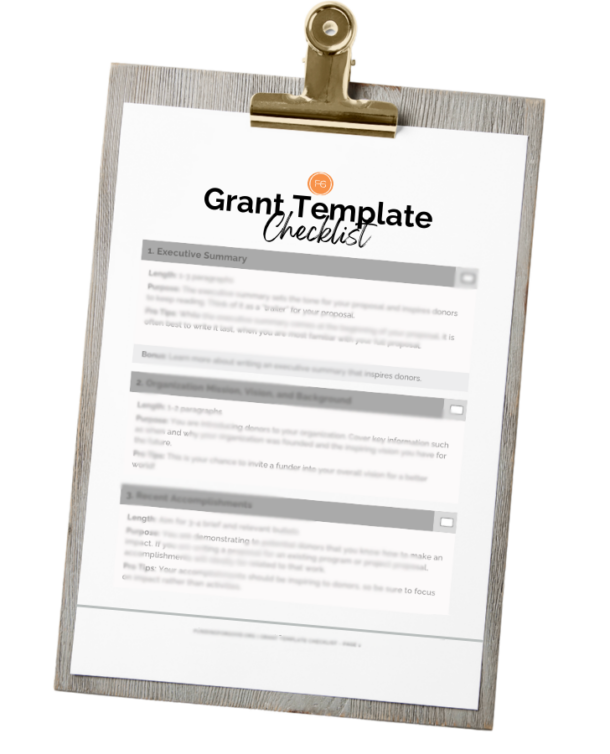Do you “know” that your organization makes a difference but struggle to share it in a clear, concise, and compelling way? If so, today’s quick dive into impact processing and reporting is for you! It’s all about Impact Data and Why Context Matters.
First things first…
What Exactly Is Impact Reporting?
Impact reporting is a streamlined method of communicating the difference an organization, program, or initiative has made on something or someone.
Sharing positive or negative trends that occur because of a nonprofit’s efforts is vital to engaging the community in the mission. The impact reporting “tools” a nonprofit uses should be strategic.
Less really is best! Challenge your team to focus on the quality of content instead of quantity.
A well-crafted report title, design, content, and image have the potential to increase the organization’s ability to educate and engage potential supporters in your mission.
What to Track
Impact reporting is all about sharing “change.” Hence, nonprofit leaders must commit to an intentional process to determine who the organization wishes to engage and what information specific stakeholder groups will want to know.
Want to know a secret?
Sharing impact reporting is the best way to prompt donors to open their hearts and wallets!
Consider evaluation methods that analyze BOTH quantitative and qualitative. While quantitative data focus on hard data that can be ordered and analyzed, qualitative data puts a human face and voice to your mission. It is crucial to find that perfect balance between statistics and stories because donors want to know the numbers and support people-not projects!
The following questions offer a simple starting point for establishing the data fields your organization could or should be tracking:
- What do program participants/clients need to know to increase participation in your programs/services?
- What key metrics will help the organization’s staff or board prioritize efforts and resources?
- What do your community members want to know about your work before they volunteer?
- What data will help your organization leverage new or strengthen existing partnerships?
- What metrics will current or future foundations want you to include in grant proposals or reports?
Not that you have determined what data your organization should be tracking, it is essential to put that information to work.
At the end of the day, content without context is meaningless.
While content describes WHAT you do, context defines the WHY?
Context clarifies why the information is essential and how it ties into the bigger picture.
Below you will find a few of the most significant ways nonprofits can use impact data to drive the organization’s planning processes, resources, outreach, and donor development strategies.
When to Use It:
- Assess value- Crunch the numbers to determine if efforts produce the desired change at the individual and community levels. Are goals being achieved, or is it time to reevaluate the program model?
- Prioritize resources- Use metrics to determine if programs or projects offered are cost-effective as they relate to human, financial, and material resources.
- Confirm quality- Seek qualitative data from program participants and other key groups in the form of surveys, questionnaires, or testimonials to improve program/service experiences
- Increase credibility- Numbers do not lie. Use well documented, quantitative data to demonstrate transparency and build community trust.
- Engage donors- Demonstrate to donors that they are funding your impact, not your existence, by using data to show positive change and confirm sustainability.
How to Share It
There is no one “best” way to share impact data but some of the most popular include:
- Annual Reports- Consider spicing up the title! (Annual Impact Report, Generosity Report, etc.)
- Strategic Plan Updates-Staff should never wait until the end of the year to provide updates on strategic planning goals. Instead, provide an impact report to the board quarterly, so the strategic plan remains relevant and action-focused.
- Staff Reports- Rather than listing random actions/and activities, seek ways to present all staff reports through the lens of the strategic plan. Click HERE for a sample Executive Director.
- Donor Cultivation- Consider including specific ways a donor’s gift has created a positive impact by sharing specific statistics or stories in handwritten thank you notes, emails, and personal phone calls.
- Social Media– A picture is worth a thousand words so take a moment to share positive impact throughout the year in the forms of a picture, post, or video.
We have some other resources that may be helpful as you look at your Impact Data and how to use it (below). As always, Keep Growing for Good!
Sharing Organizational Impact – Increase Your Donor Base in 20 Days


